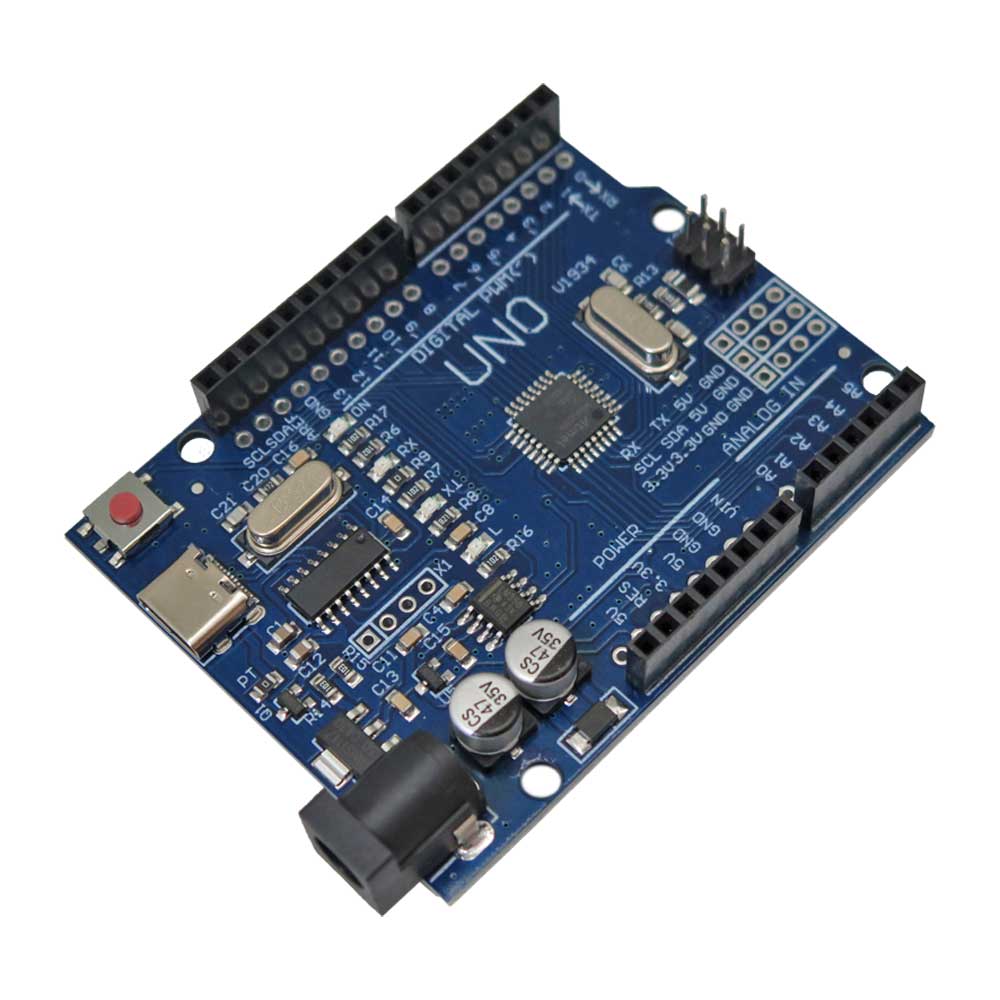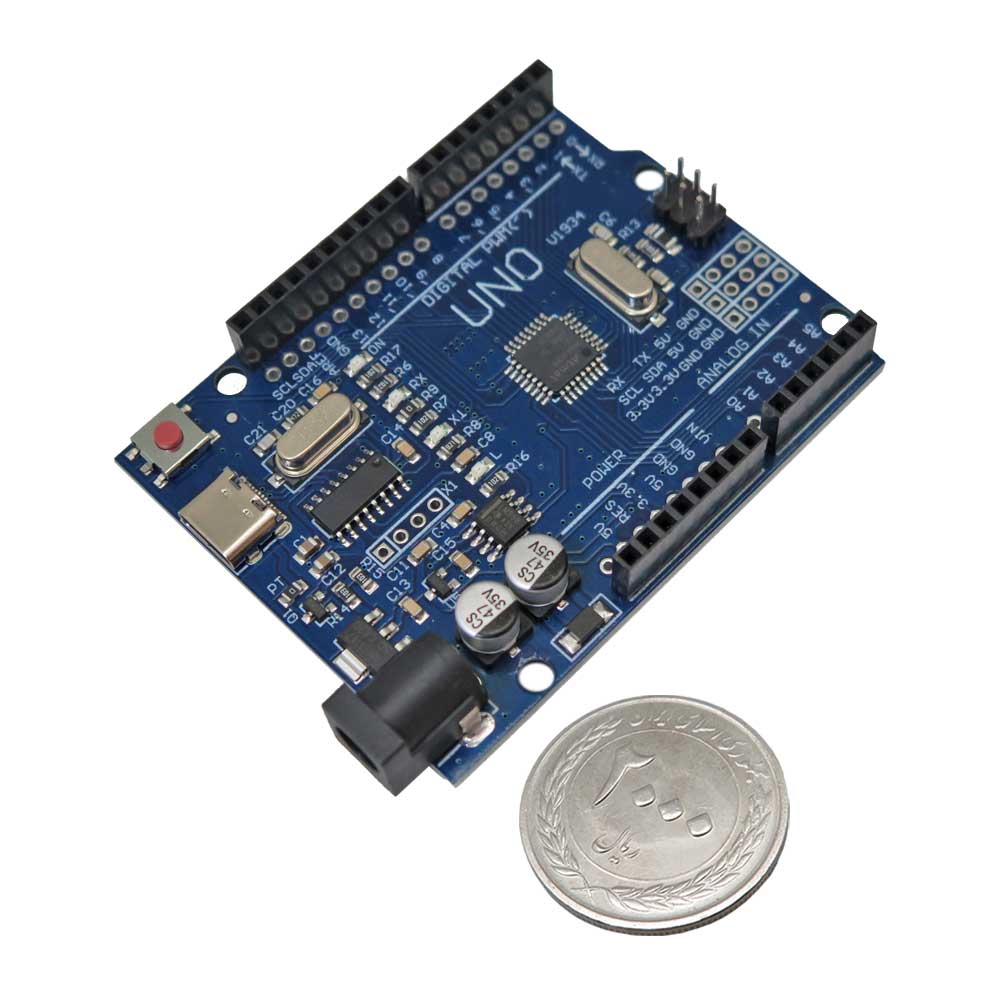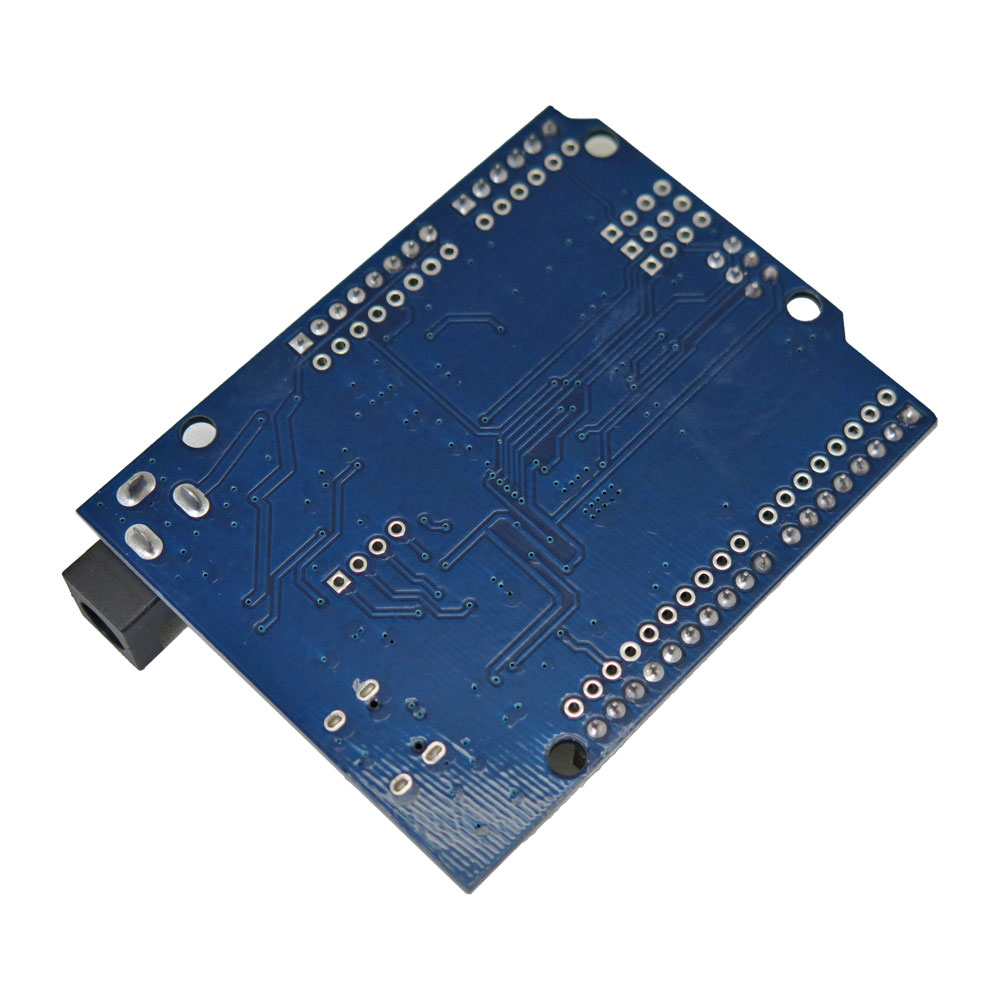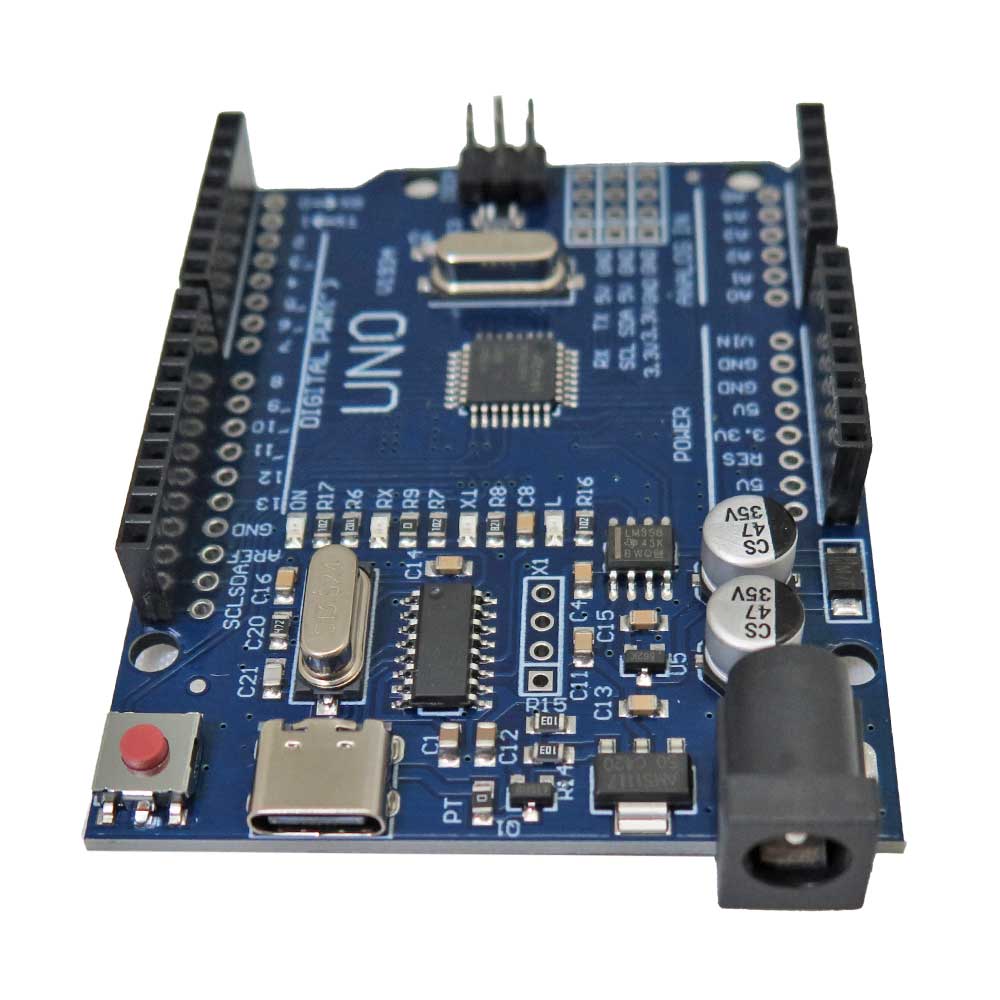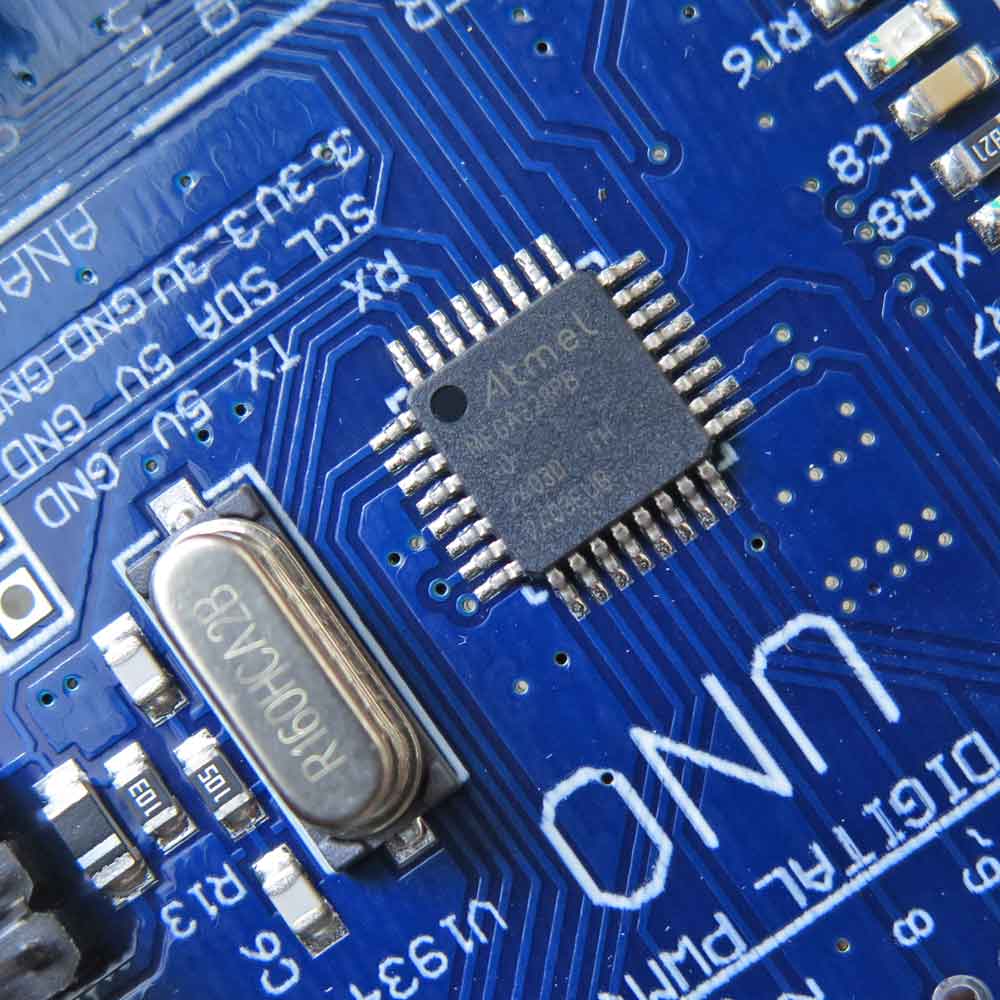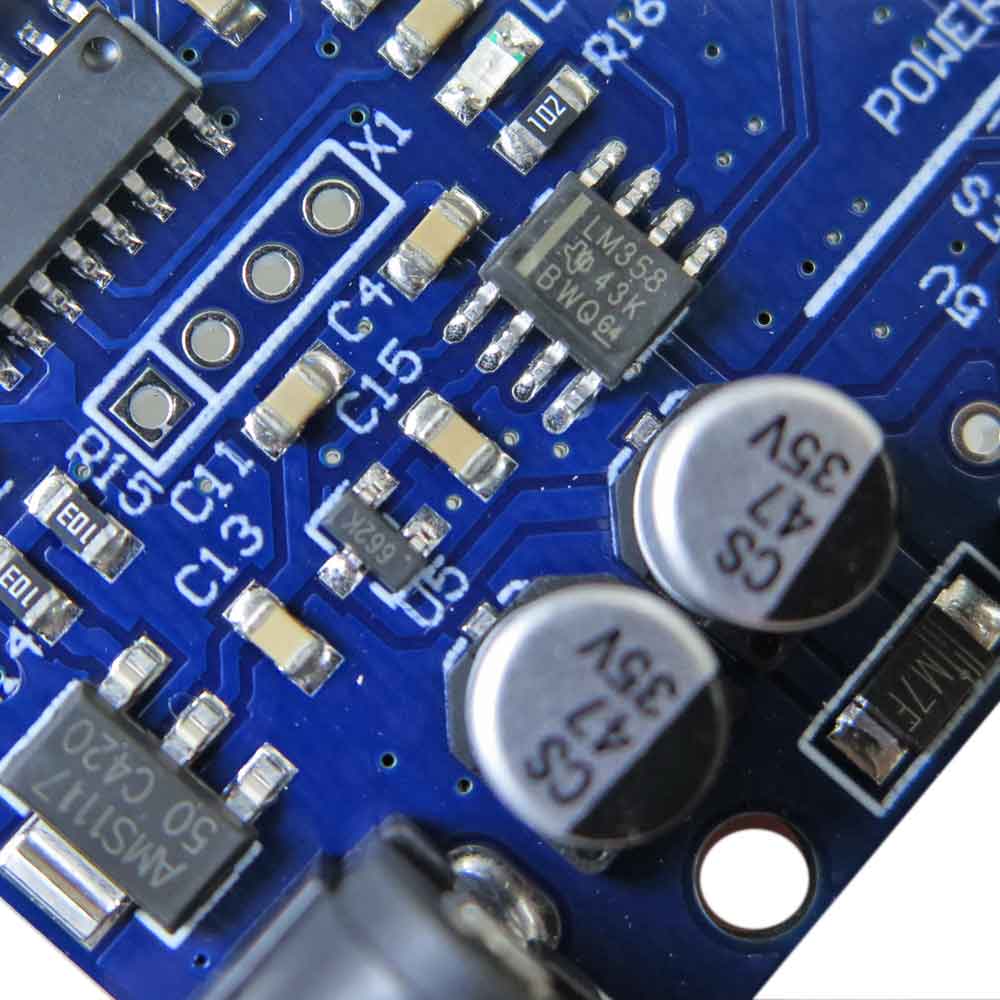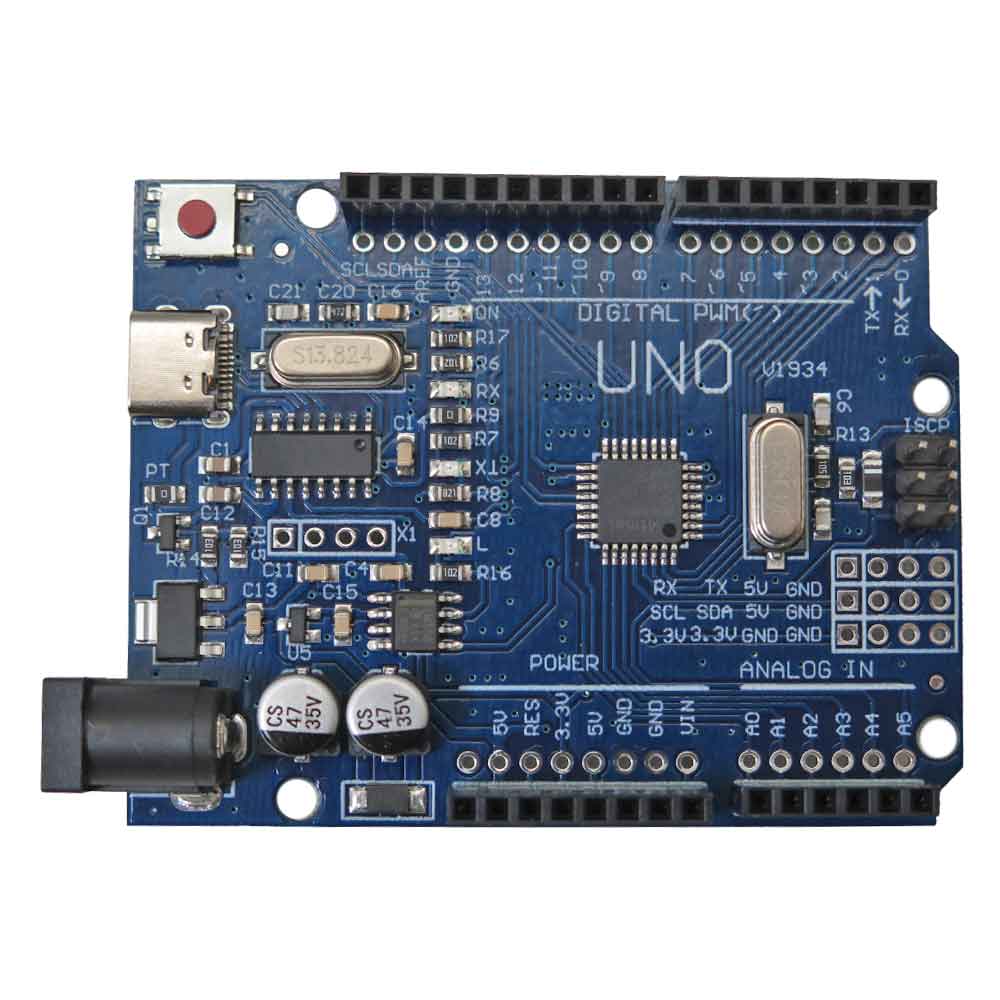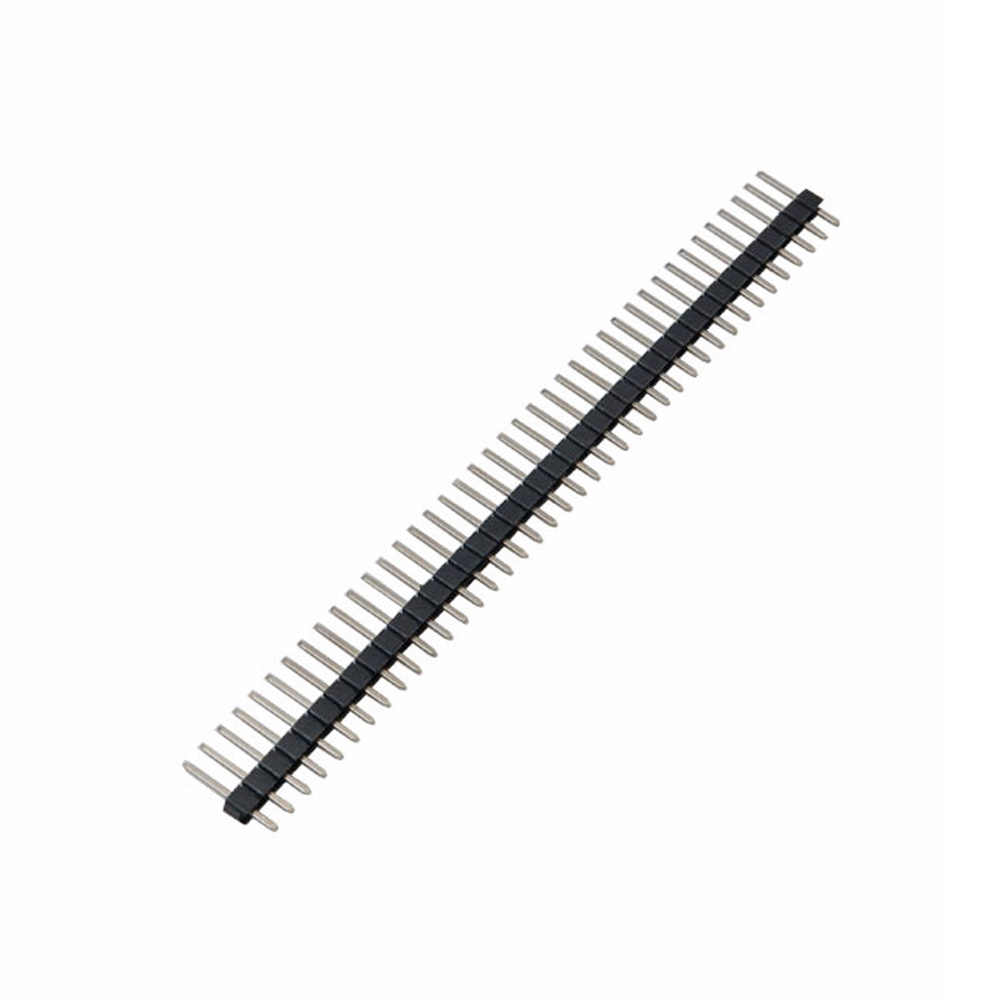249,100 تومان
در حال حاضر موجود نمی باشد
موجودی در حال ارسال به انبار
-
100 عدد1404/07/25
علاقه مندان : 21 نفر
وضعیت : فعال
تعداد مرجوعی : 0
دنبال کنندگان : 23 نفر
قدمت : 11 سال و 4 ماه و 3 روز
وزن : 27 گرم
کل فروش : 3196 عدد
تعداد سفارش ها : 1423 سفارش
4 از 5.0 با 37 رای
برد آردوینو Uno دارای پردازنده مرکزی ATmega328 و چیپ مبدل CH340G
برد آردوینوUNO یک برد پردازنده با میکروکنترلر ATmega328P می باشد. این برد آردوینو UNO مشابه با برد آردوینو UNO R3 است و بجای پردازنده ATmega328P از ATmega328P-au استفاده شده که این پردازنده خلاف پردازنده برد آردوینو UNO R3، به صورت SMD و با پکیج TQFP بر روی برد مونتاژ شده و به همین علت این برد آردوینو UNO را با نام بردUNO SMD نیز میشناسند. امکاناتی مانند سوکت منبع تغذیه، داشتن 14 پایه ورودی و خروجی دیجیتال، LEDهای نمایانگر وضعیت برد، دکمه ریست، کلاک 16 مگاهرتزی، امکان تغذیه از طریق باتری و آداپتور و وجود رگولاتور 3.3 ولتی از جمله مزایای برد آردوینو UNO می باشد. اما تفاوت اساسی این برد با برد آردوینو UNO R3 استفاده از مبدل CH340G برای ارتباط سریال روی برد می باشد که به همین علت، این برد را با عنوان برد آردوینو UNO CH340G می شناسند.
برد آردوینو UNO با تراشه CH340G از کلیه نرم افزارها، شیلد و ماژول های سازگار با بردهای آردوینو پشتیبانی می کند و جهت راه اندازی برد، نیاز به نصب درایور CH340G دارد.
هشدار : حداکثر ولتاژ ورودی بردهای آردوینو غیر اورجینال 9 ولت می باشد در صورت اعمال ولتاژ 12 ولت ( با وجود ذکر شده در دیتاشیت ) برد دچار آسیب می گردد.
کاربرد برد آردوینو UNO با تراشه CH340G و پردازنده ATmega328P :
- پروژه و مدارات الکترونیکی
- مدارات کنترل کننده شرایط محیط
مشخصات برد آردوینو UNO CH340G:
- میکروکنترلر: ATmega328
- ولتاژ عملیاتی: 5 ولت
- ولتاژ ورودی (پیشنهادی): 9 ~ 7 ولت
- پین های دیجیتال ورودی/خروجی: 14 (6 تای آن به عنوان خروجی PWM استفاده می شود.)
- پین های ورودی آنالوگ: 6
- جریان DC هر پین ورودی و خروجی: 40 میلی آمپر
- ولتاژ DC جهت پین 3.3V
- 50 میلی آمپر
- حافظه فلش: 32 کیلوبایت (ATmega328) که 0.5 کیلوبایت از آن مورد استفاده BootLoader قرار می گیرد.
- سرعت کلاک: 16MHZ
- SRAM : 2 KB
- نوع پورت ورودی: Type-C
مستندات:
اطلاعات تکمیلی ARDUINO CH340G
Description:
Arduino UNO is a microcontroller board based on the ATmega328P (datasheet). It has 14 digital input/output pins (of which 6 can be used as PWM outputs), 6 analog inputs, a 16 MHz quartz crystal, a USB connection, a power jack, an ICSP header, and a reset button. It contains everything needed to support the microcontroller; simply connect it to a computer with a USB cable or power it with an AC-to-DC adapter or battery to get started.
CH340 is a series of USB bus adapters, that provides serial, parallel or IrDA interfaces over the USB bus ( CH340G supports serial interface only). The CH340G integrate circuit provides common MODEM signals to allow adding a UART to a computer or converting existing UART devices to the USB interface.
Warning: Although the written voltage in the datasheet is 12V, the maximum input voltage of Arduino UNO is 9V, if apply 12V, the board will damage.
Application:
Electronics Circuits
Electronic Projects
Specification:
Full-speed USB interface, compatible with Type-C
Operates with a minimum amount of external components:
a crystal and a minimum of four capacitors.
Provides a virtual serial port for upgrading existing serial port devices or adding serial ports to a PC.
Supports all existing applications using serial ports without the need of changing existing code.
Hardware full-duplex serial interface with internal FIFO. Baud rate ranges from 50bps to 2Mbps.
Supports common flow control signals RTS, DTR, DCD, RI, DSR, and CTS.
Supports RS232, RS422, and RS485 with external level-shifting components.
Supports 5V and 3.3V operation.
RoHS-compliant narrow body SO-16 package.
Features:
Microcontroller: ATmega328
Operating Voltage: 5V
Input voltage(Recommended): 7 - 9 volt
Digital I/O pins: 14 (6 pins used for PWM output)
Analog Pins: 6
I/O DC Current: 40mA
Flash memory: 32KB, 0.5KB used for Bootloader
Clock Frequency: 16 MHz
SRAM: 2 KB
EEPROM: 1KB
